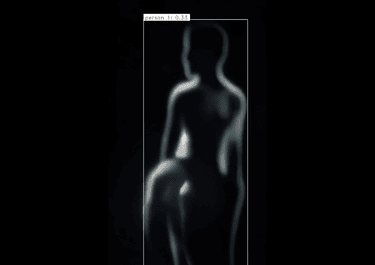
Cris Mollee on AI and performance: ‘Human figure, diffused’ at ADE Lab Village
Words by Ania Drożdż
Picture this: you're standing in front of the art installation at ADE Lab Village. Limbs disappear and reappear, torsos stretch into impossible shapes, faces melt into abstract forms. To us looking, these bodies look painful, even grotesque. To the AI, they register as ‘perfectly fine human.’ ‘Human figure, diffused’ unfolds across four chapters. In the first, the AI acts as a simple mirror, responding naturally to visitors’ movement. But with each subsequent chapter, it takes more freedom. It starts distorting, fragmenting, reimagining the body in increasingly abstract ways. ‘What it keeps telling me is that my body can be a lot of things that seem really painful to me,’ Mollee says. ‘It's really easy to chop off body parts and bend or shape us in a way that’s very unnatural. If I see a normal human body, I’m like, okay, we can work with that. But if I see the things that the machine comes up with, I’m a bit hurt because it just chops off our limbs and everything. It shows very little empathy.’
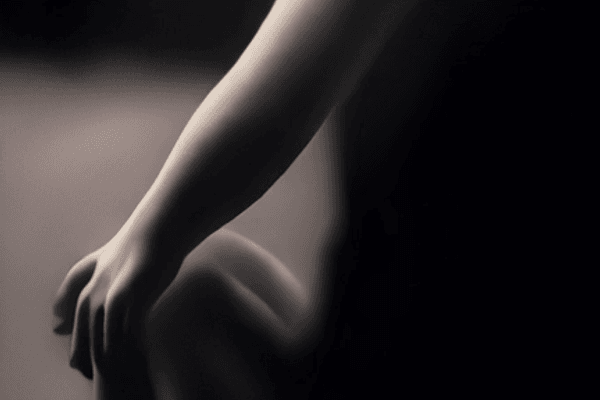
Statistics, not magic
People tend to care about bodies in ways algorithms never will, and watching these transformations on the artwork makes that gap visceral. ‘Even while just seeing it, it becomes really tangible,’ the artist explains. ‘If I just lose a limb, that's not something that is easy on our minds to happen. But if the computer does it, it doesn't care. It doesn't have a perception that this is a bad thing.’
So what are we actually working with? Mollee's view is pragmatic: 'I think inherently it's a tool. It's statistics.' The progression through the four chapters mirrors how artist-AI collaboration can work: starting with understanding what the tool reflects back, then gradually allowing it more interpretive space while remaining aware that its transformations come from calculation, not comprehension. The algorithm has no concept of pain, wholeness, or respect for the body. It only has patterns and probabilities.
The next decade of electronic music culture
The emerging professionals at ADE Lab will navigate this daily. They're entering an industry where AI is already embedded in everything from production workflows to live performance systems. How they choose to integrate AI, which tasks to delegate, which creative decisions to protect, where to draw boundaries, will shape the next decade of electronic music culture.
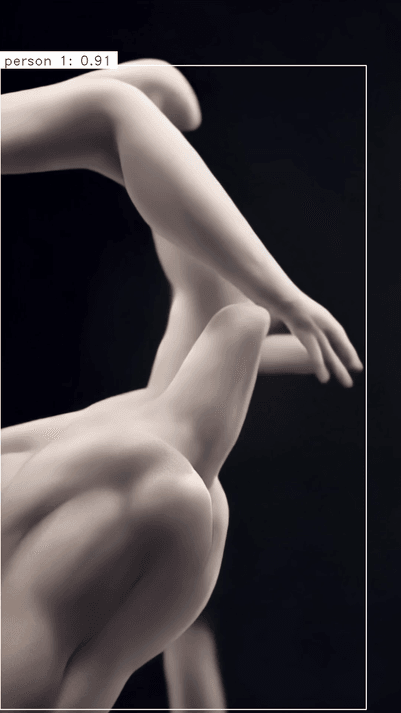
Statistics, not magic
People tend to care about bodies in ways algorithms never will, and watching these transformations on the artwork makes that gap visceral. ‘Even while just seeing it, it becomes really tangible,’ the artist explains. ‘If I just lose a limb, that's not something that is easy on our minds to happen. But if the computer does it, it doesn't care. It doesn't have a perception that this is a bad thing.’
So what are we actually working with? Mollee's view is pragmatic: 'I think inherently it's a tool. It's statistics.' The progression through the four chapters mirrors how artist-AI collaboration can work: starting with understanding what the tool reflects back, then gradually allowing it more interpretive space while remaining aware that its transformations come from calculation, not comprehension. The algorithm has no concept of pain, wholeness, or respect for the body. It only has patterns and probabilities.
The next decade of electronic music culture
The emerging professionals at ADE Lab will navigate this daily. They're entering an industry where AI is already embedded in everything from production workflows to live performance systems. How they choose to integrate AI, which tasks to delegate, which creative decisions to protect, where to draw boundaries, will shape the next decade of electronic music culture.
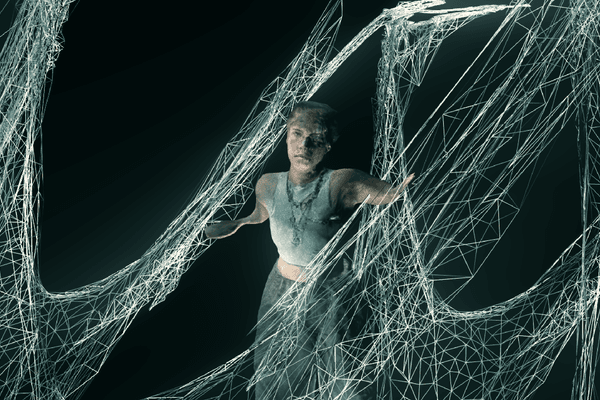
The collaborator question
Understanding AI's limitations shouldn't have to mean rejecting it. The technology has practical value – in camera tracking, live visuals, production workflows. ‘Sometimes the output of when you use AI already looks quite good,’ Mollee says. And when it's not? ‘The imperfections that it can have, is okay. Sometimes they make up for nice glitches, in the same way that playing music from a cassette recorder has its own kind of sound.’ AI carries its own medium-specific characteristics, its own aesthetic fingerprint.
The question, then, becomes where to draw boundaries for the collaboration with AI. The artist's non-negotiable: the conceptual work. ‘That's the whole nice thing about creating art - having your idea and exploring your idea and seeing what it needs and then making it.’ She's encountered artists who outsource even concept development to AI, and the impulse confuses her. ‘I don't understand why you would want to give this away. That's really something I would want to cherish for myself.’
Cyborg movement
Within those boundaries, AI can serve as an unexpected collaborator. However, the human presence, the embodied self, remains central. ‘It's a bit like if you start to talk with someone and they just bring a different perspective,’ Cris explains. ‘This AI tool can also do that. It's an output that you don't always expect, and I think that can be very inspiring.’
‘Human figure, diffused’ itself reveals this potential in action. As the AI takes more interpretive freedom, movement becomes fluid and strange. ‘You get all these in-between states - this shapeshifting way of moving,’ Mollee describes. ‘I think we're really reaching a type of movement that's very inherent to AI as a medium.’ She calls it a 'cyborg movement’: not human choreography, not pure algorithm, but something that emerges from their interaction. Her installation lets visitors participate physically, their movements generating unpredictable responses where the body stays central even as it's digitally reimagined.
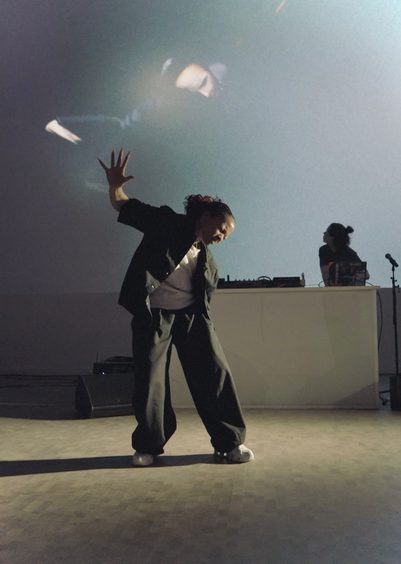
The collaborator question
Understanding AI's limitations shouldn't have to mean rejecting it. The technology has practical value – in camera tracking, live visuals, production workflows. ‘Sometimes the output of when you use AI already looks quite good,’ Mollee says. And when it's not? ‘The imperfections that it can have, is okay. Sometimes they make up for nice glitches, in the same way that playing music from a cassette recorder has its own kind of sound.’ AI carries its own medium-specific characteristics, its own aesthetic fingerprint.
The question, then, becomes where to draw boundaries for the collaboration with AI. The artist's non-negotiable: the conceptual work. ‘That's the whole nice thing about creating art - having your idea and exploring your idea and seeing what it needs and then making it.’ She's encountered artists who outsource even concept development to AI, and the impulse confuses her. ‘I don't understand why you would want to give this away. That's really something I would want to cherish for myself.’
Cyborg movement
Within those boundaries, AI can serve as an unexpected collaborator. However, the human presence, the embodied self, remains central. ‘It's a bit like if you start to talk with someone and they just bring a different perspective,’ Cris explains. ‘This AI tool can also do that. It's an output that you don't always expect, and I think that can be very inspiring.’
‘Human figure, diffused’ itself reveals this potential in action. As the AI takes more interpretive freedom, movement becomes fluid and strange. ‘You get all these in-between states - this shapeshifting way of moving,’ Mollee describes. ‘I think we're really reaching a type of movement that's very inherent to AI as a medium.’ She calls it a 'cyborg movement’: not human choreography, not pure algorithm, but something that emerges from their interaction. Her installation lets visitors participate physically, their movements generating unpredictable responses where the body stays central even as it's digitally reimagined.
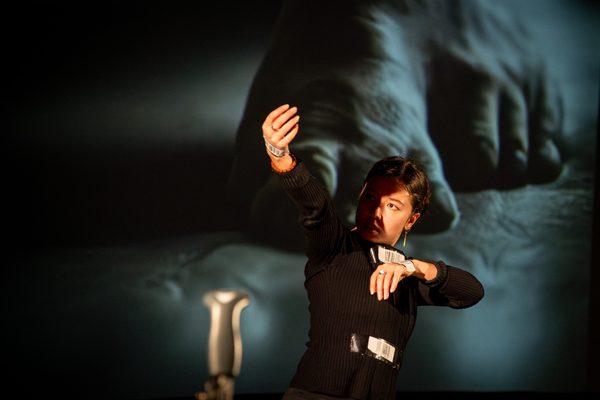
The power of presence
Electronic music shows are ‘often programmed very linearly,’ but as Cris notes, AI opens different possibilities. ‘You don't have to pre-build everything. You can generate it on the spot.’ The added value is that ‘AI can even choose a path,' making real-time decisions that shape performances as they unfold. Digital embodiment becomes a way to heighten what's happening physically on stage, making the connection between movement and sound more immediate and visible.
The installation ‘Human figure, diffused’ at ADE Lab Village offers a glimpse of what thoughtful collaboration could look like. Visitors move their bodies, AI generates transformations the visitors could never predict: cyborg movements, impossible forms that surprise. Yet without physical presence, without someone standing there moving, the system does nothing. This is the balance worth maintaining: technology expands what bodies can express and experience, while the body itself remains the foundation. If the next generation can hold that line, electronic music culture gains new territory without losing the embodied core that makes people want to dance.
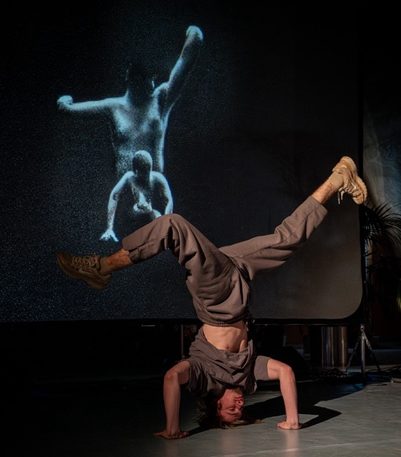
The power of presence
Electronic music shows are ‘often programmed very linearly,’ but as Cris notes, AI opens different possibilities. ‘You don't have to pre-build everything. You can generate it on the spot.’ The added value is that ‘AI can even choose a path,' making real-time decisions that shape performances as they unfold. Digital embodiment becomes a way to heighten what's happening physically on stage, making the connection between movement and sound more immediate and visible.
The installation ‘Human figure, diffused’ at ADE Lab Village offers a glimpse of what thoughtful collaboration could look like. Visitors move their bodies, AI generates transformations the visitors could never predict: cyborg movements, impossible forms that surprise. Yet without physical presence, without someone standing there moving, the system does nothing. This is the balance worth maintaining: technology expands what bodies can express and experience, while the body itself remains the foundation. If the next generation can hold that line, electronic music culture gains new territory without losing the embodied core that makes people want to dance.
At ADE Lab Village, Cris Mollee's installation sits alongside other works exploring technology's creative potential. But ‘Human figure, diffused’ asks a specific question that resonates across all of them: as we integrate increasingly sophisticated tools, how do we ensure the body - the physical foundation of electronic music culture - stays at the center rather than fading into the background? The answer shapes everything that comes next.